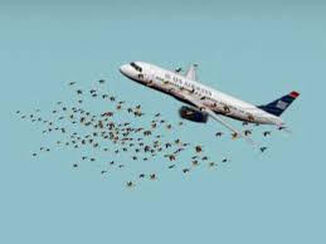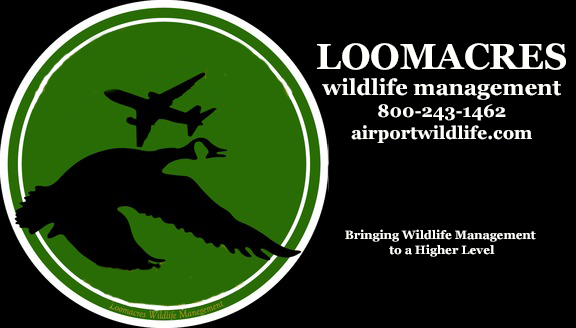 Wildlife collisions with aircrafts have occurred since the dawn of flying! Calbraith Rodgers who was the first man to successfully fly across the United States was also the first person to die as a result of bird strike to an aircraft. You decide which way he is remembered. The loss of revenue for costly repairs to aircrafts due to wildlife strikes is a global concern but the more important concern is passenger safety! When it comes to wildlife strikes no aircraft or airport is exempt. A Wildlife Hazard Assessment (WHA) makes it possible to gauge a species’ potential for a damaging collision with aircraft. By considering factors such as the body mass and density of the animal, its frequency on the airfield, the observed behaviors of the species, and its abundance and tendencies in the area, a prediction can be made concerning the risk species may pose on an airfield. The FAA is responsible for creating and enforcing the Federal Aviation Regulations (FAR) and policies to maintain public aviation safety. Compliance with FAR Part 139.337 (Appendix A), the FAA requires certified airports to conduct wildlife hazard assessment (WHA), and if necessary, establish a Wildlife Hazard Management Plan (WHMP) when the following events occur. 1. An aircraft experiences multiple bird strike or engine ingestion. 2. An aircraft experiences a damaging collision with wildlife other than birds. 3. Wildlife of a size or in numbers capable of causing an event described above is observed to have access to any airport flight pattern or movement area. So, what are some of the FAA approved methods to collecting Wildlife Hazard Assessment data? Loomacres Wildlife Management who was the first private sector company appointed by the FAA to service airports with their Wildlife Hazard Assessment and Wildlife Hazard Management Plans conduct the following methods to obtain data. Onsite Survey: These surveys are conducted at certain points in the airfield. What biologist are looking for is habitat that can hold or attract wildlife, species of wildlife such as small mammals, birds, fish and insects. All these surveys and discoveries are then recorded in an incident report. Biologist also look for potential holes in a fence line where animals from out of the airfield can come and go as they please increasing your risk. These surveys are done at different times (morning, afternoon, evening) to make sure all times of the day are covered. Offsite Surveys: The FAA requires that an offsite survey be conducted in a 5-mile radius surrounding your airport. What is taken into consideration here is attractants and habitat for animals to thrive in. Our biologist looks for bodies of water, habitat, food sources, and gathering points for migratory animals. All observations of species and how many species are then recorded in an incident report. These surveys are done at different times (morning, afternoon, evening) to make sure all times of the day are covered. Spotlight Survey: These are obviously done multiple times throughout the night but typically start ½ hour after sundown. The biologist will then drive around the perimeter of the airfield using a spotlight documenting nocturnal wildlife activity. Animals were viewed using a spotlight, their species, activity, location, and number were recorded. Small Mammal Trapping: Small mammals play a key role in the ecosystem and are a major prey species for foxes, coyotes, marten raptors, and other carnivores. By conducting a small mammal survey using traps in the airfield, biologist can identify the attractant for predators to lurk around the airport increasing the risk of an airstrike. Callback Survey: By using recorded sounds at different points on the airfield, biologist is looking and listening for responses made by owls, hawks, and other birds of prey. This will identify any species living on or near the airfield that can pose a potential airstrike risk. For more information please download this FREE E-BOOK or fill out the fields below and someone from Loomacres Wildlife Management will contact you. Loomacres - 800-243-1462 Bringing Wildlife Management to a Higher Level ©
0 Comments
Leave a Reply. |
Sales & Marketing
|

 RSS Feed
RSS Feed